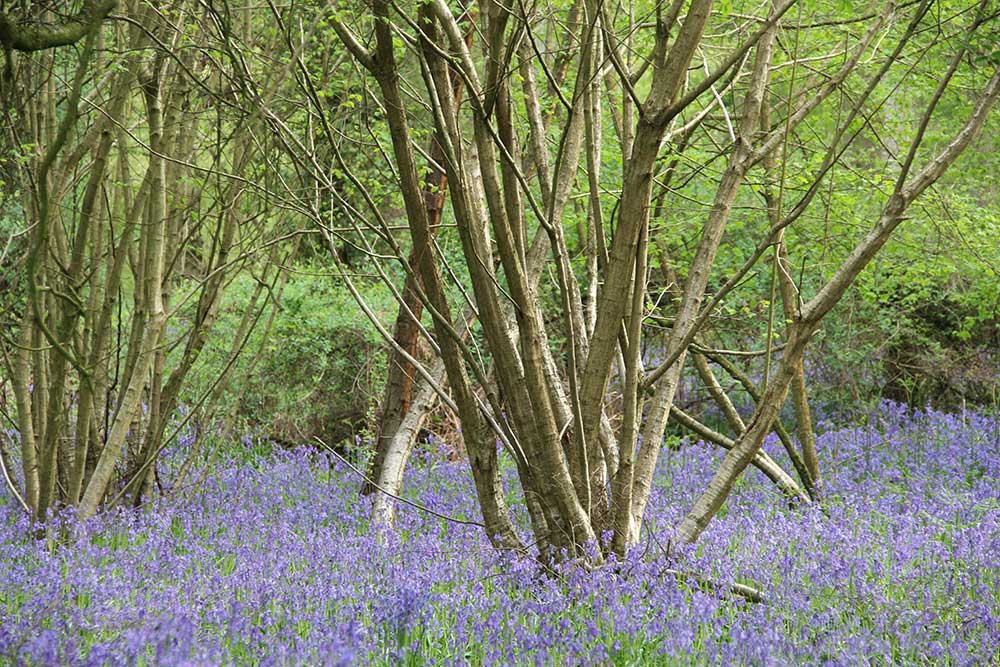Ancient or new woodland

In the UK dormice have a close association with old woodlands. Throughout our history woodlands have been managed for both their timber and the underwood. Standard trees would have provided structural timber for houses and boats and the coppice for a variety of uses including thatching spars hurdles, coracle frames, charcoal and firewood. Small scale woodland management as would have been done with hand tools and would have been ideal for dormice as it would have created an age mosaic of coupes within the woodland. In addition, ancient woodlands usually have a high number of trees and shrub varieties that have established over time that will fulfil dormouse dietary requirements.
Dormice appear to show a long persistence to ancient woodland sites, By looking at old maps and identifying woodlands where dormice might have existed it is they may still exist in the local landscape even if the original woodland is much changed or no longer exists..
A note from an Oliver Rackham on dormouse densities in Bradfield wood in Suffolk noted that dormice were most likely to be recorded in nest boxes in coppice of 7-9 years old. A later further study in the same wood showed that dormouse preference, in terms of age of coppice, was within the 11-20 year age bracket. As dormice are considered to be a species most likely to be found in successional woodland it would appear that the optimal age of such successional woodland to record dormice in boxes would be between about 8 – 20 years.
New woodlands can also be considered to be a successional habitat and can be ideal for dormice. But they need to have had a good variety of trees and shrubs planted and they need to have arboreal connectivity into the wider landscape so that dormice are able to disperse into them. For example in a small young 7ha woodland on the Isle of Wight, an average of 3.49 dormice per hectare were recorded in boxes in Spring and 7.99 dormice per hectare were recorded in boxes in autumn.
| Date | Woodland age | No. of dormice recorded in spring(1) [standardised to 180 boxes] | Dormice in spring in boxes per ha. | No. of dormice recorded in autumn(2) [standardised to 180 boxes] | Dormice in autumn in boxes per ha. |
| 2015 | 13 | 39.6 | 5.01 | 61.2 | 7.75 |
| 2016 | 14 | 25.2 | 3.19 | 33.3 | 4.21 |
| 2017 | 15 | 18 | 2.28 | 95 | 12.02 |
| Average | 3.49 | 7.99 |
| 1. No. of dormice recorded in Spring is calculated as the maximum number of dormice recorded in either May or June. |
| 2. No. of dormice recorded in Autumn is calculated as the maximum number of dormice recorded in either September or October. |
In contrast at large ancient managed woodland about 8 km from the above site, an average of 1.06 dormice per hectare were recorded in boxes in Spring and 2.62 dormice per hectare were recorded in boxes in autumn. The reason for fewer dormice occupying boxes at the ancient woodland site any either be a reflection of actual population differences between the sites or it may be a reflection that there are likely to be a higher number of natural nest sites available at the ancient woodland site and hence boxes are used less.
| Year | Woodland age | No. of dormice recorded in spring(1) | Dormice in spring in boxes per ha. | No. of dormice recorded in autumn(2) | Dormice in autumn in boxes per ha. |
| 2015 | Ancient | 30 | 1.01 | 105 | 3.53 |
| 2016 | Ancient | 29 | 0.98 | 70 | 2.36 |
| 2017 | Ancient | 35 | 1.18 | 59 | 1.98 |
| Average | 1.06 | 2.62 |
| 1. No. of dormice recorded in Spring is calculated as the maximum number of dormice recorded in either May or June. |
| 2. No. of dormice recorded in Autumn is calculated as the maximum number of dormice recorded in either September or October. |
We have been working to save hazel dormice in the UK for over 20 years. Find out about our campaigns and how you can help.
Go back to Hazel dormouse conservation
